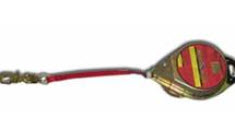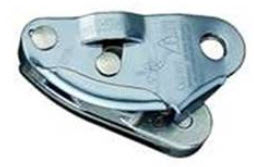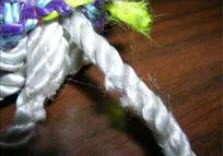Rock and ice climbing have become increasingly popular in recent years. Climbing is now a popular form of exercise and adventure, and a great way to enjoy the outdoors. Unfortunately the greater numbers involved in the sport has led to greater number of accidents. Climbing gyms have brought climbing to areas without outdoor rock resources. These indoor gyms use artificial holds to simulate rock walls. Indoor climbing gyms typically have climbs ranging from twenty feet to fifty feet, or more. Bouldering areas are shorter in height, with adequate padding to protect climbers from falls without the need for ropes.
Climbing accidents can involve the failure of climbing equipment, although most climbing accidents can be attributed to human error. Climbing is an inherently dangerous sport, and judgment or procedural errors can have devastating effects. This Clues will cover some of the most common climbing accidents caused by product failure.

Auto Belay Failure
Belaying is the process of protecting the climber. This is normally done by a person using a friction device that is used to lock the rope off in the event of a climber fall. Belay devices are also used to lower the climber back to the ground.
Automatic belay devices have been developed that remove the belaying person. These systems keep a certain amount of tension in the line, allowing slack to be taken in as the climber ascends, and stopping their fall and slowly lowering the individual. These devices are particularly useful to climbing gyms, since they remove one element of possible human error from the system, potentially reducing the liability to the facility, and reducing the number of necessary employees. Automatic belay devices also allow facilities to cater to climbers without physical belayers.
Some automatic belay devices may not have redundancy, which can result in a dropped climber in the event of any single component failure. One specific brand of automatic belay device, Redpoint and Auto-Belay Descenders manufactured by Mine Safety Appliances Company, were recalled by the manufacturers after reports of injuries from dropped climbers. A problem with the clutch bearing of these automatic belay devices resulted in multiple climbers being dropped, with injuries ranging from mild to severe.
Many modern automatic belay devices have backup systems that will prevent a climber from being dropped in the event of a component failure. Other devices use magnetic technology for reported greater reliability and safety.
Some accidents involving automatic belay devices involve the failure of the climber to correctly clip into the belay rope or cable.
Auto Lock Belay Devices
Automatic locking belay devices utilize a cam that clamps the rope when used and loaded correctly. These are used by people belaying their partners climbing. These automatic locking devices have become increasingly popular. Even though users swear by these devices there are numerous occasions where climbers are dropped by belayers using these auto locking devices.

These failures are normally the result of not using the product per manufacturer specifications. Without specific training, it is easy to use these devices incorrectly. Auto locking devices also allow the belayer to become complacent and inattentive because they believe the auto locking feature will stop the climber without their intervention. If used correctly these devices can be as safe as the older tube-style manual belay devices. Lowering climbers using some brands of these auto locking devices can result in accidents, usually when used by someone unfamiliar with their operation and limitations. This is due to two sources of friction when lowering-the position of the release lever that changes the orientation of the belay device to allow rope to begin to feed, as well as the friction provided by the brake hand holding the rope. Sudden change in one of these can result in a dropped climber.
Tube Style Belay Devices
These are manual belay devices that rely on friction to stop the rope from sliding. The belayer must position the rope to the side of the belay device for the friction of the device to be used which will hold the climber in the event of a fall. Climbers are also dropped with belayers using these devices due to belayer error.
Material Failure of Gear
Belay devices, carabiners, anchors, harness buckles, and other gear can fail catastrophically due to manufacturing or design defects, overloading, or improper use. While not a common occurrence, failure of these important pieces of gear can result is serious consequences. Certain types of high load climbing falls can result in much higher forces acting on gear which can result in gear failure.

Severe falls can cause rope core damage
Factors Influencing Fall Outcome
Most climbing gyms use some sort of shock absorbing floor surface as an added safety feature in the event that someone does fall. Facilities that do not use padded floors or facilities with inadequately padded floors are risking a greater number and greater severity of climbing accidents. People or objects in the fall path of a climber in a bouldering gym can cause injuries when the climber impacts the obstacle.
Human Error Accidents
The majority of climbing accidents involve human error. Climbers pushing their limits or climbers that rappel or lower from the tops of climbs are loading their equipment and essentially testing the complete system every time they climb. Any error in that system can result in falls. In climbing gyms, the biggest problems are belayer error and failure to tie in correctly.













